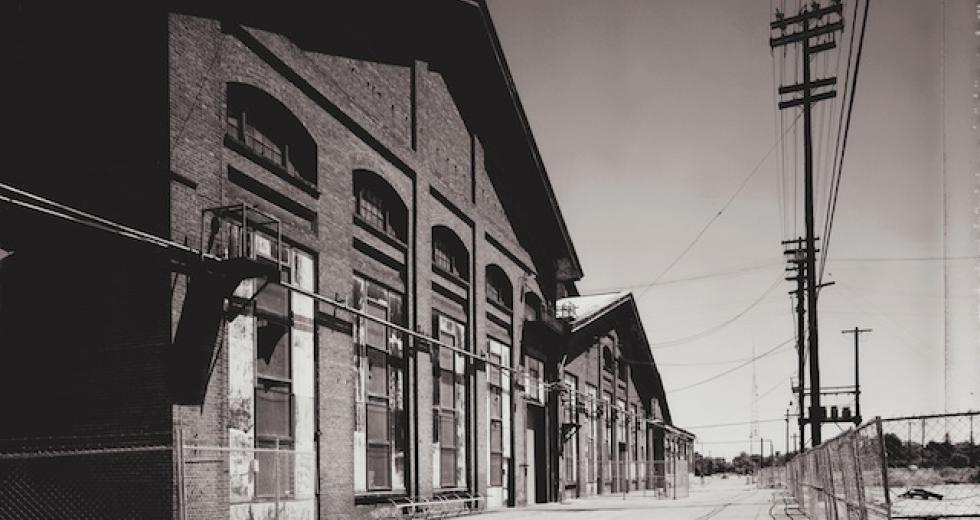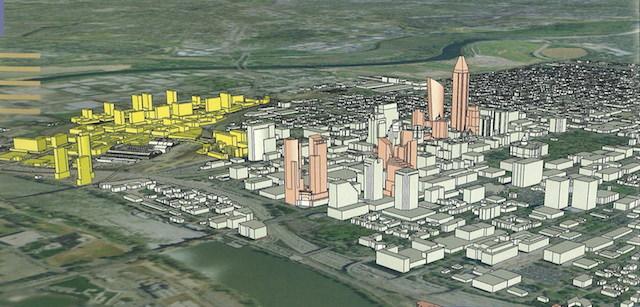The year was 1990, and downtown Sacramento was “poised on the brink of one of the nation’s most ambitious development opportunities,” a “landmark project” with the potential to “change and expand our vision of Sacramento and initiate a new era of urban lifestyle.”
If that language sounds familiar, it should. In the December 1990 issue of Comstock’s, reporter Paula Boghosian outlined the master plan for the development of the Southern Pacific Railyards. Devised by ROMA Design Group of San Francisco, the catalytic proposal included a museum, mixed-use commercial space, a potential convention center and “a new intermodal transportation terminal, which combines major travel modes such as standard passenger trains, high-speed commuter trains, light rail and bus service.”
Clearly, that project never materialized. Too many public concerns about the amount of retail included in the plan and its impact on Downtown Plaza. (Hindsight really is 20/20, isn’t it?) For years the city wanted to reclaim the railyards, but, as we reported in 2007, “negotiations with southern Pacific, and later union Pacific, became bogged down by a variety of issues, including who would pay for environmental clean up.”
In 2003, local developer Richard Rich, at that time the development director for Thomas Enterprises, spent $40 million — without title to the property — to transform more than 200 acres with a museum, 1 million square feet of retail space, 10,000 housing units, a new sports arena, an “integrated transit system and mass-transit hub,” restaurants and a jazz club “set to open its doors by 2023.”
Well, that didn’t work out too great either. In the summer of 2010, Thomas Enterprises defaulted on a $187 million loan balance. Later that fall, Inland American Real Estate Trust foreclosed on the site by winning an auction outside the Sacramento County courthouse. While not a developer, Inland was at least a good sport, working with the city to build the infrastructure necessary to attract a developer.
Well guess what, this spring Larry Kelley took control of the railyards. The sale isn’t yet complete, but Kelly, who built Stanford Ranch in Rocklin and turned McClellan Air Force Base into a private industrial park, now owns Downtown Railyard Venture and has his own ideas for how to revitalize the giant patch of dirt. Of course, logistics being what they are, construction of the first new buildings in the railyards likely won’t begin until next year at the very earliest. Time sure flies when you’re having fun – and spending millions of dollars.
The story of the railyards’ redevelopment is older than Comstock’s (a real estate developer told me that Sacramento has been in negotiations since 1902), and as recently as last year, West Sacramento Mayor Christopher Cabaldon was quoted in our pages extolling our region’s “exciting” progress in the railyards (my sarcastic italics there, not his), saying: “The recently announced river crossing between Sacramento’s railyards and north West Sacramento is very exciting. We have applied for and received federal replacement funding for the I Street Bridge. Hopefully within eight years, when federal and state money becomes available, we will be building a new span for cars, probably bikes and pedestrians, and potentially streetcars.
Boy oh boy, progress really happens fast around here. I should hurry up and have kids so my grandchildren will be around in time for the ribbon cutting.







Comments
Interesting history here.
I just hope they still plan to save the old Southern Pacific shops and open them to the public as part of the railroad museum.